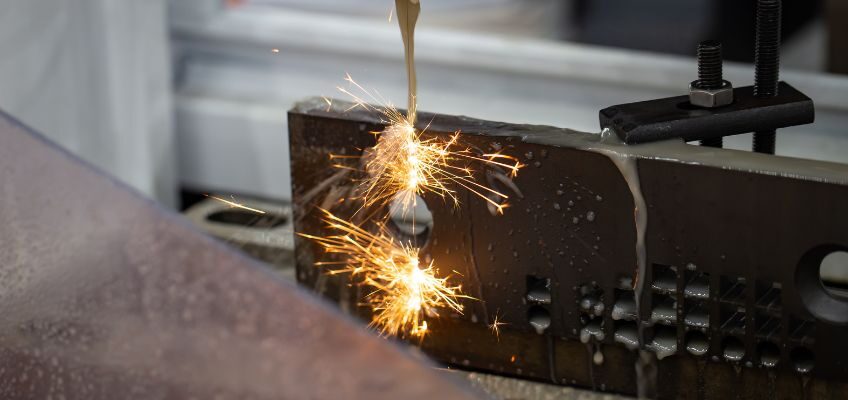When you think of cutting metal, sparks might come to mind, maybe even saws or lasers. But one of the most precise methods out there doesn’t involve blades at all. Instead, it uses electricity. That’s right, Wire EDM, or Wire Electrical Discharge Machining, uses sparks to shape metal with incredible accuracy. Sounds futuristic? It actually has a long and fascinating history.
What Is Wire EDM?
Before diving into history, it helps to understand what Wire EDM actually is. In a nutshell, it’s a way to cut electrically conductive materials (like metal) using a thin wire and electrical discharges (sparks). The wire never touches the material, it just sends out tiny, controlled sparks that melt and vaporize the metal to form precise shapes.
This process is beloved in industries like aerospace, automotive, and medical tech, where perfection really matters.
The Early Spark: 1940s Beginnings
The roots of Wire EDM trace back to 1943, during World War II, when two Soviet scientists, Lazar and Rosa Lazarenko, were experimenting with electrical discharges. Their goal was to find a way to remove broken drill bits from machinery. They figured out that electrical sparks could precisely erode metal, and the idea of electrical discharge machining (EDM) was born.
At this stage, the process wasn’t about wires, it used shaped electrodes, and it was pretty slow. But it laid the groundwork.
The Birth of Wire EDM: 1960s–1970s
The real magic began in the 1960s and early ’70s, when engineers developed a way to use a fine wire as the electrode. This allowed for much more detailed and precise cuts. Suddenly, intricate patterns and complex shapes that were hard or impossible to make with traditional tools became possible.
In 1967, the first prototype wire EDM machine was introduced in the West. It wasn’t perfect, but it was a game-changer. Companies quickly saw the potential, especially in mold-making and tool-and-die industries.
Getting Smarter: The 1980s
By the 1980s, Wire EDM technology had improved dramatically. Machines became computer-controlled (CNC), which meant operators could program cuts digitally instead of manually guiding the wire. This added speed, precision, and repeatability, huge wins for manufacturing.
Also during this time, new types of wire (like coated brass) and improved dielectric fluids (the liquid used to help control the sparking) made the process even more efficient.
Speed, Precision, and Innovation: 1990s to Today
Since the 1990s, Wire EDM has continued to evolve. Today’s machines are:
- Super-fast
- Incredibly precise (some can cut within a few microns!)
- Environmentally cleaner, thanks to better fluids and filtering systems
- Automated, often running with minimal human input
We’ve also seen improvements in software, allowing for simulation, design integration, and better quality control.
Modern Wire EDM can handle ultra-hard materials, produce tiny parts for electronics or medical devices, and even create custom gears and components that are impossible to make any other way.
Why Does It Matter?
Understanding the evolution of Wire EDM isn’t just about geeking out on machine tools. It’s about appreciating how innovation happens over time. What started as a way to remove broken tools during a war turned into a precision powerhouse that helps build everything from small components of diagnostic machines to airplane engines.
It has transformed manufacturing, quietly, but profoundly. And it’s not slowing down anytime soon.
Here’s a quick timeline to recap:
- 1943 – Lazarenkos develop basic EDM concept
- 1960s–70s – Wire EDM emerges as a cutting method
- 1980s – CNC control and improved materials boost performance
- 1990s–Today – Speed, automation, and software take over
- Wire EDM is proof that even sparks can shape the future, literally.
Contact us at CAM Tech, Inc. We are happy to discuss your project and demonstrate how Wire EDM can benefit your manufacturing requirements.

